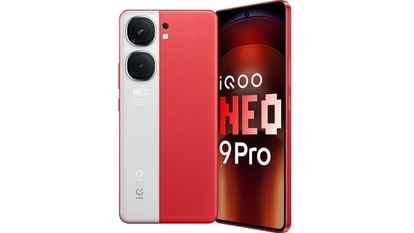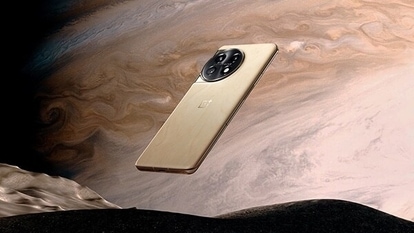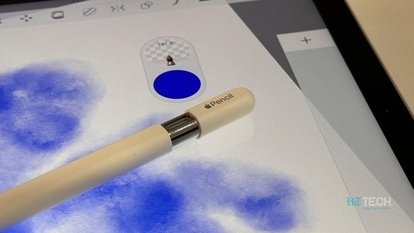Hands-on: HTC One X
We have been waiting for this ever since the phone was announced at the Mobile World Congress by HTC but we finally have the majestic HTC One X in our hands.
We have been waiting for this ever since the phone was announced at the Mobile World Congress by HTC but we finally have the majestic HTC One X in our hands. The first quad-core smartphone to launch in the country, the HTC One X has a brilliant 4.7-inch 720p Super LCD2 HD display, 8 megapixel camera with 1080p video recording, and Android 4.0 Ice Cream Sandwich out of the box, all in a beautiful unibody design.
But before we give you the full review (which we are working on), here is quick hands-on with the HTC One X.


The HTC One X uses a gorgeous unibody design. The entire phone's surface is made from two parts, one is the polycarbonate shell and the Gorilla Glass at the front. Being made out of one single block of plastic makes it feel very strong and sturdy, but it does come with some disadvantages such as the inability to remove the battery. The Gorilla Glass on the front is completely flat but thanks to curved sides, it gives the optical illusion of the glass itself being curved.
Underneath that Gorilla Glass sits a stunning 1280 x 720 resolution IPS LCD. The high pixel density makes the display look very sharp and the large size and the bright colors make it a joy to behold. Unfortunately, thanks to the large size of the display, it makes the phone itself pretty large and we found it rather difficult to use it single handedly. It may not be as big and unwieldy as the Samsung Galaxy Note but it's not exactly comfortable to use either.


On the hardware front the One X comes with a 1.5GHz Nvidia Tegra 3 processor. It uses the new 4-PLUS-1 configuration, where the CPU has four performance cores and one companion cores. All your usual tasks are generally handled by the companion core, which consumes far less battery power and only when things get too demanding does the processor seamlessly switches over to the performance cores. Apart from that, there is also a 12 core GeForce GPU for 3D applications and games. Then there is 1GB of RAM and 32GB of internal memory of which 25GB can be seen when the device is mounted on the PC and about 2GB is reserved for apps. Unfortunately, there is no microSD card slot.
On the software side, the phone comes with Android 4.0.3 with Sense 4.0. Unlike the previous versions, Sense 4.0 us much lighter and cuts down on a lot of the frivolous animations, such as the spinning homescreens when you do a quick swipe. It also looks a bit more understated, with some matte finishes instead of glossy icons. Some of the older frivolities have given way to new ones, such as the 3D cube animation when you scroll between the category tabs at the bottom and or the splitting of the list when you try to scroll at the end of the list. We'll cover these more in the review.


At the end of the day, though, despite its improvement, Sense is still an unnecessary extra that exists solely because HTC wants to differentiate its products from other Android phones out there. Personally, we'd take stock Ice Cream Sandwich over this anyday. HTC should at least offer an option for people to choose if it must put Sense on its phones.
Performance-wise the One X is really good, with everything from scrolling through the homescreens and opening and switching between apps being really quick. We tried some graphically heavy games like Dead Space and ShadowGun and they all worked really well.


One small problem is that because the One X does not have a dedicated menu button, older apps that are not optimized for Android 4.0 and that don't have the on-screen menu button (which would be almost all of them) tend to show up a bar at the bottom of the screen with just the menu button in it. This can be really annoying because a decent portion of your display gets wasted. Hopefully developers will update their apps to take care of this problem.


HTC made a big deal of the camera on the One series phones. The deal was actually made about the speed of the camera rather than the outright image quality. Everything from the time taken to start the camera app to the focussing speed and the time taken to save the image have been greatly received and all this was possible by a dedicated image processor that HTC calls ImageSense. All we can say is that this is the fastest mobile phone camera we have ever seen. As for the actual image quality, it was only above average with the cameras from the Galaxy S II and the iPhone 4S putting on a far better show. Same is true for the 1080p videos as well.
We are still using the phone and putting it through our usual battery of tests and benchmarks. We should have the full review for you to read shortly. Stay tuned.
Catch all the Latest Tech News, Mobile News, Laptop News, Gaming news, Wearables News , How To News, also keep up with us on Whatsapp channel,Twitter, Facebook, Google News, and Instagram. For our latest videos, subscribe to our YouTube channel.


























